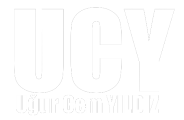Organizations need to be agile in delivering both incremental and radical innovations. Incremental innovation projects are easier to manage within the usual functional and bureaucratic structures. However radical innovation endeavors may require a different setup due to 2 main reasons:
- First, radical innovations tend to conflict with core business in terms of performance criteria (e.g. shareholder expectations) and the corresponding resource allocation.
- Second, radical innovations pose a number of management challenges (such as recognizing opportunities, developing new business models …etc.) that are usually not addressed by existing management systems.
In the past few decades, organizations have been trying different structural approaches to achieve agility and do innovation.
- (1: Side projects) Some have tried to carry out exploration activities without any specific organizational arrangement. They have just tried to push these activities as side projects within their existing exploitative organizational model.
- (2: Exploratory cross-functional teams) Some have tried to utilize temporary but dedicated cross functional teams to address exploration activities. These teams can be very light weight and operate alongside of a traditional functional structure. They can also be heavy weight and maintained in a matrix structure.
- (3: Dedicated exploratory subunits) Some others have established dedicated exploratory business units within their exploitative organizations and have allowed them to maintain a completely different setup.
- (4: Independent exploratory organizations) Some have adopted a venture capital model. They have established separate and independent exploratory organizations and have let them flourish on their own, away from the parent exploitative organizations.
- (5: Completely new organizational model) Some organizations have gone further by experimenting with completely new organizational models, which I prefer to name as sociocratic models, such as holacracy. These models constitute a radical alternative to traditional models. They promote the concepts of team driven structure, self-organization, distributed leadership, peer control, high transparency. Although their primary selling argument is making organizations more human focused, they also allow an organization to be more adaptive and ambidextrous.
A growing body of research has examined various organizations, which have tried above approaches. O’Reilly and Tushman, (2004) show evidences that dedicated exploratory subunits are more successful in breakthrough innovation — with respect to independent organizations or cross functional teams — in the existence of a senior team, who tightly link exploratory subunits with the rest of the exploitative organization. In this way, a subunit-based structure effectively allows cross-fertilization and at the same time prevents cross-contamination. When the breakthrough product is intended to replace the existing one, also cross-functional team designs performed as well.
On the other hand, there are some studies (ie: Christensen & Bower, 1996) claiming that organizations cannot explore and exploit at the same time. They present powerful arguments favoring creation of a separate and independent exploratory organization especially when the new offering has a lower profit margin than the mainstream offerings and serve a new set of customers.
As far as temporal sequencing option is considered, many studies claim that such a setup can work for an organization if the rate of change in its operating environment is low. As for new organizational models, there are limited number of studies about how they contribute to organizational performance, and these studies reflect a mixed view about how much they help ambidexterity. In general, they are perceived as very difficult to implement in reliability-driven industries.
O’Reilly and Tushman, (2008) proposes a framework for deciding the best reconfiguration approach to exploration initiatives based on strategic importance (value) of the exploration initiative for the exploitative organization and operational leverage (cross-fertilization opportunity between exploration and exploitation endeavors). This framework suggests that, the lower the operational leverage is, the higher the separation and independency of the exploration initiative can be. Accordingly, the higher the strategic importance is, the more the integration between exploration and exploitation endeavors should be.

If strategic importance of the exploration initiative is low, but cross-fertilization opportunity with the exploitation side is high, running the exploration initiative close to the exploitation side (as a side project (1) or in a cross functional team (2)) may prove more suitable. If strategic importance is high, but operational leverage is low, it may be better to manage the exploration initiative in a dedicated subunit (3). If both operational leverage and strategic importance is low, it is better to spin out the initiative (4). Structure of a fully ambidextrous organization remains as a topic to be studied further.
Organizational form is important in many ways. But contemporary research agrees that organizational ambidexterity / agility requires far more than structure. It includes a complex set of repeatable routines (governance mechanisms) for
- decentralization of control to the exploratory initiative
- differentiation of organizational setup to prevent cross-contamination
- targeted integration to capture cross-fertilization opportunities
- orchestration of trade-offs between exploration and exploitation
Existing research is not granular enough to be of much use to practitioners. More insight is necessary about specific micro-mechanisms employed by the successful ambidextrous / agile companies.
Return to OrgAnarchist section.


0 Yorum